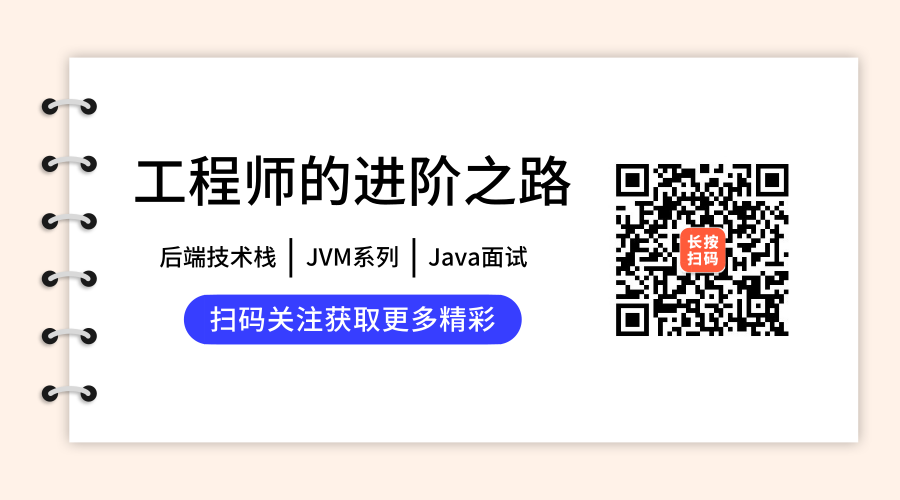在Spring Boot項目中使用Spock測試框架
- 2019 年 10 月 27 日
- 筆記
本文首發於個人網站:在Spring Boot項目中使用Spock測試框架
Spock框架是基於Groovy語言的測試框架,Groovy與Java具備良好的互操作性,因此可以在Spring Boot項目中使用該框架寫優雅、高效以及DSL化的測試用例。Spock通過@RunWith註解與JUnit框架協同使用,另外,Spock也可以和Mockito(Spring Boot應用的測試——Mockito)一起使用。
在這個小節中我們會利用Spock、Mockito一起編寫一些測試用例(包括對Controller的測試和對Repository的測試),感受下Spock的使用。
實戰
- 根據Building an Application with Spring Boot這篇文章的描述,spring-boot-maven-plugin這個插件同時也支援在Spring Boot框架中使用Groovy語言。
- 在pom文件中添加Spock框架的依賴
<!-- test --> <dependency> <groupId>org.springframework.boot</groupId> <artifactId>spring-boot-starter-test</artifactId> <scope>test</scope> </dependency> <dependency> <groupId>org.spockframework</groupId> <artifactId>spock-core</artifactId> <scope>test</scope></dependency> <dependency> <groupId>org.spockframework</groupId> <artifactId>spock-spring</artifactId> <scope>test</scope> </dependency>- 在src/test目錄下創建groovy文件夾,在groovy文件夾下創建com/test/bookpub包。
- 在resources目錄下添加packt-books.sql文件,內容如下所示:
INSERT INTO author (id, first_name, last_name) VALUES (5, 'Shrikrishna', 'Holla'); INSERT INTO book (isbn, title, author, publisher) VALUES ('978-1-78398-478-7', 'Orchestrating Docker', 5, 1); INSERT INTO author (id, first_name, last_name) VALUES (6, 'du', 'qi'); INSERT INTO book (isbn, title, author, publisher) VALUES ('978-1-78528-415-1', 'Spring Boot Recipes', 6, 1);- 在com/test/bookpub目錄下創建SpockBookRepositorySpecification.groovy文件,內容是:
package com.test.bookpubimport com.test.bookpub.domain.Author import com.test.bookpub.domain.Book import com.test.bookpub.domain.Publisher import com.test.bookpub.repository.BookRepository import com.test.bookpub.repository.PublisherRepository import org.mockito.Mockito import org.springframework.beans.factory.annotation.Autowired import org.springframework.boot.test.SpringApplicationContextLoader import org.springframework.context.ConfigurableApplicationContext import org.springframework.jdbc.datasource.init.DatabasePopulatorUtils import org.springframework.jdbc.datasource.init.ResourceDatabasePopulator import org.springframework.test.context.ContextConfiguration import org.springframework.test.context.web.WebAppConfiguration import org.springframework.test.web.servlet.MockMvc import org.springframework.test.web.servlet.setup.MockMvcBuilders import spock.lang.Sharedimport spock.lang.Specification import javax.sql.DataSourceimport javax.transaction.Transactional import static org.hamcrest.Matchers.containsString; import static org.springframework.test.web.servlet.request.MockMvcRequestBuilders.get; import static org.springframework.test.web.servlet.result.MockMvcResultMatchers.content; import static org.springframework.test.web.servlet.result.MockMvcResultMatchers.status; @WebAppConfiguration @ContextConfiguration(classes = [BookPubApplication.class, TestMockBeansConfig.class],loader = SpringApplicationContextLoader.class) class SpockBookRepositorySpecification extends Specification { @Autowired private ConfigurableApplicationContext context; @Shared boolean sharedSetupDone = false; @Autowired private DataSource ds; @Autowired private BookRepository bookRepository; @Autowired private PublisherRepository publisherRepository; @Shared private MockMvc mockMvc; void setup() { if (!sharedSetupDone) { mockMvc = MockMvcBuilders.webAppContextSetup(context).build(); sharedSetupDone = true; } ResourceDatabasePopulator populator = new ResourceDatabasePopulator(context.getResource("classpath:/packt-books.sql")); DatabasePopulatorUtils.execute(populator, ds); } @Transactional def "Test RESTful GET"() { when: def result = mockMvc.perform(get("/books/${isbn}")); then: result.andExpect(status().isOk()) result.andExpect(content().string(containsString(title))); where: isbn | title "978-1-78398-478-7"|"Orchestrating Docker" "978-1-78528-415-1"|"Spring Boot Recipes" } @Transactional def "Insert another book"() { setup: def existingBook = bookRepository.findBookByIsbn("978-1-78528-415-1") def newBook = new Book("978-1-12345-678-9", "Some Future Book", existingBook.getAuthor(), existingBook.getPublisher()) expect: bookRepository.count() == 3 when: def savedBook = bookRepository.save(newBook) then: bookRepository.count() == 4 savedBook.id > -1 } }- 執行測試用例,測試通過
- 接下來試驗下Spock如何與mock對象一起工作,之前的文章中我們已經在TestMockBeansConfig類中定義了PublisherRepository的Spring Bean,如下所示,由於@Primary的存在,使得在運行測試用例時Spring Boot優先使用Mockito框架模擬出的實例。
@Configuration @UsedForTesting public class TestMockBeansConfig { @Bean @Primary public PublisherRepository createMockPublisherRepository() { return Mockito.mock(PublisherRepository.class); } }- 在BookController.java中添加getBooksByPublisher介面,程式碼如下所示:
@Autowired public PublisherRepository publisherRepository; @RequestMapping(value = "/publisher/{id}", method = RequestMethod.GET) public List<Book> getBooksByPublisher(@PathVariable("id") Long id) { Publisher publisher = publisherRepository.findOne(id); Assert.notNull(publisher); return publisher.getBooks(); }- 在SpockBookRepositorySpecification.groovy文件中添加對應的測試用例,
def "Test RESTful GET books by publisher"() { setup: Publisher publisher = new Publisher("Strange Books") publisher.setId(999) Book book = new Book("978-1-98765-432-1", "Mytery Book", new Author("Jhon", "Done"), publisher) publisher.setBooks([book]) Mockito.when(publisherRepository.count()). thenReturn(1L); Mockito.when(publisherRepository.findOne(1L)). thenReturn(publisher) when: def result = mockMvc.perform(get("/books/publisher/1")) then: result.andExpect(status().isOk()) result.andExpect(content().string(containsString("Strange Books"))) cleanup: Mockito.reset(publisherRepository) }- 運行測試用例,發現可以測試通過,在控制器將對象轉換成JSON字元串裝入HTTP響應體時,依賴Jackson庫執行轉換,可能會有循環依賴的問題——在模型關係中,一本書依賴一個出版社,一個出版社有包含多本書,在執行轉換時,如果不進行特殊處理,就會循環解析。我們這裡通過@JsonBackReference註解阻止循環依賴。
分析
可以看出,通過Spock框架可以寫出優雅而強大的測試程式碼。
首先看SpockBookRepositorySpecification.groovy文件,該類繼承自Specification類,告訴JUnit這個類是測試類。查看Specification類的源碼,可以發現它被@RunWith(Sputnik.class)註解修飾,這個註解是連接Spock與JUnit的橋樑。除了引導JUnit,Specification類還提供了很多測試方法和mocking支援。
Note:關於Spock的文檔見這裡:Spock Framework Reference Documentation
根據《單元測試的藝術》一書中提到的,單元測試包括:準備測試數據、執行待測試方法、判斷執行結果三個步驟。Spock通過setup、expect、when和then等標籤將這些步驟放在一個測試用例中。
- setup:這個塊用於定義變數、準備測試數據、構建mock對象等;
- expect:一般跟在setup塊後使用,包含一些assert語句,檢查在setup塊中準備好的測試環境
- when:在這個塊中調用要測試的方法;
- then : 一般跟在when後使用,盡可以包含斷言語句、異常檢查語句等等,用於檢查要測試的方法執行後結果是否符合預期;
- cleanup:用於清除setup塊中對環境做的修改,即將當前測試用例中的修改回滾,在這個例子中我們對publisherRepository對象執行重置操作。
Spock也提供了setup()和cleanup()方法,執行一些給所有測試用例使用的準備和清除動作,例如在這個例子中我們使用setup方法:(1)mock出web運行環境,可以接受http請求;(2)載入packt-books.sql文件,導入預定義的測試數據。web環境只需要Mock一次,因此使用sharedSetupDone這個標誌來控制。
通過@Transactional註解可以實現事務操作,如果某個方法被該註解修飾,則與之相關的setup()方法、cleanup()方法都被定義在一個事務內執行操作:要麼全部成功、要麼回滾到初始狀態。我們依靠這個方法保證資料庫的整潔,也避免了每次輸入相同的數據。
Spring Boot 1.x系列
- Spring Boot的自動配置、Command-line-Runner
- 了解Spring Boot的自動配置
- Spring Boot的@PropertySource註解在整合Redis中的使用
- Spring Boot項目中如何訂製HTTP消息轉換器
- Spring Boot整合Mongodb提供Restful介面
- Spring中bean的scope
- Spring Boot項目中使用事件派發器模式
- Spring Boot提供RESTful介面時的錯誤處理實踐
- Spring Boot實戰之訂製自己的starter
- Spring Boot項目如何同時支援HTTP和HTTPS協議
- 自定義的Spring Boot starter如何設置自動配置註解
- Spring Boot項目中使用Mockito
本號專註於後端技術、JVM問題排查和優化、Java面試題、個人成長和自我管理等主題,為讀者提供一線開發者的工作和成長經驗,期待你能在這裡有所收穫。



